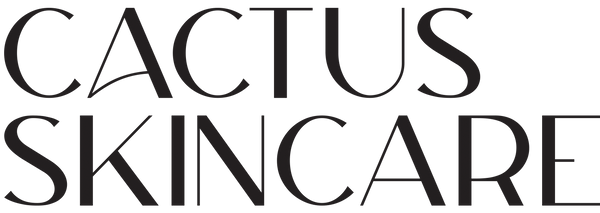
Pimples or Purge? How to Tell the Difference...
Share
We hear you, the term “skin purging” doesn’t exactly sound attractive – the idea of gunk being extracted from your pores is almost enough to make us want to run for the hills.
It does however have a purpose and is 100% worth the effort, but let’s not skip ahead.
What is Purging?
A skin purge refers to the reaction that many people’s skin has to introducing certain active products into their skincare routine. Namely retinols, chemical or physical exfoliants, acids, clay masks (basically anything that helps to resurface the skin).
Taking off the top layer of dead skin cells, prompts the skin to regenerate new ones which can bring ingrained blockages to the surface of the skin purging it of impurities. Hence the breakouts.
The Good News?
- It’s temporary and should settle within a couple of weeks of starting your new product.
- Purge breakouts usually heal much faster than other breakouts as skin cell turnover speed is increased.
- It’s a sign your products are working.
Can Purging be Prevented?
In short, no – and while no one wants to deal with the purge from a new product, adding an active into your routine is a long-term game. The results will outweigh the initial discomfort.
If you really want to try to limit it however, dermatologists recommend introducing your actives slowly into your routine, adding one new product at a time and starting with that product 1x per week before becoming more frequent to see how your skin adjusts (this is good practice for any new addition to your skincare routine, active or not).
Before adding a new product, you should also take note of the ingredients to make sure they don’t contain anything that has irritated your skin in the past (some ingredients will just never be compatible with everyone).
What Acne Might Look Like During a Purge
Purging doesn’t cause breakouts, just speed up the resurfacing process – so basically, it brings pimples that were already there, to the surface faster – this falls under the umbrella term of “inflammatory acne” which includes:
- Whiteheads
- Blackheads
- Pustules
- Cysts
These sound no different to normal breakouts, so to help you understand why there’s a difference, it’s useful to explain the process by which normal acne is caused.
Normal Acne Formation:
When things like excess sebum (oil), or grime mix with dead skin cells inside of a pore, this can create a type of bacteria called P. acnes. When this bacterium is noticed by your body it releases white blood cells to attack the foreign substance. This causes inflammation – which is why pimples often look so inflamed, red, swollen & pus-filled.
Active Induced Acne:
Acne induced by active ingredients is formed a little differently. These ingredients don’t cause bacteria to be removed from your skin but prompt skin cell turnover through the exfoliation process which generally removes the inflammation. With the inflammation out of the way, your skin can work on clearing itself faster.
So How to Tell the Difference?
Whilst it’s important to note that not all reactions to a new product are a purge (the product could be irritating your skin for a different reason), there are a couple of ways to tell the difference:
- Location: generally, purges will trigger breakouts in areas you typically breakout. That isn’t to say you won’t see the odd pimple in random places, but they will be concentrated in your usual acne zones.
- Duration: purge breakouts will be shorter & heal much faster than a normal breakout. This is because there is less inflammation in the skin. If your new product has caused breakouts that last longer than 4-6 weeks, the product may not be doing what you hoped. A good guide for adults is 1x skin cycle which is approx 28 days.
- Appearance: a purge should not be overly red, inflamed or sore. More just a collection of pimples.
- Actives: purges are caused by ingredients that actively resurface the skin, so if your skin is breaking out after adding a new product that might be comedogenic (clogs your pores) then it’s likely a traditional breakout.
Treating a Purge vs. a Breakout
We wish we could give you a magic bullet to make that purge disappear asap, but the truth is that the best (and most frustratingly boring) solution is time. A purge should only last 2-3 weeks (possibly longer if your skin is particularly congested), so you do have to just ride it out.
In the meantime?
Do all the things you’d normally do to help your skin through a breakout:
- Drink plenty of water & stay hydrated.
- Try not to pop or pick at your skin.
- Get plenty of sleep to aid healing.
- Limit sun exposure (many actives lead to skin sensitivity when exposed to the sun).
- Remember that the purge is a sign of the product doing its job.
When to Stop Using a Product?
If you have picked up that your breakouts aren’t like the above then it’s highly likely the product is irritating and not helping your skin through an adjustment period. If this is the case, stop using the product immediately and revert to a very simple routine (pH balanced, non-stripping cleanser & soothing moisturiser) until your skin barrier has recovered.
